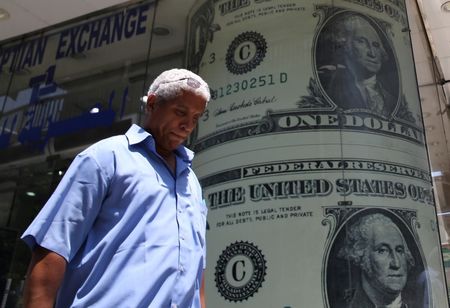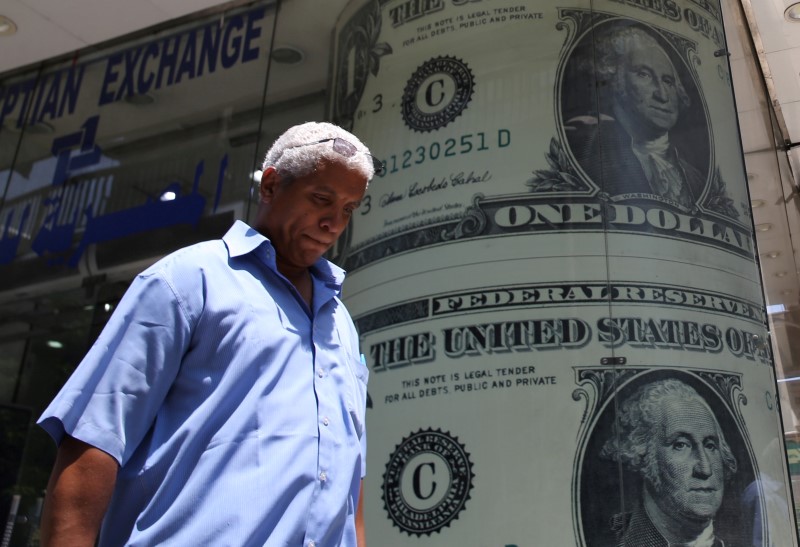Forex
Dollar retreats after strong Fed-inspired gains


© Reuters.
Investing.com – The U.S. dollar edged lower in early European hours Thursday, handing back some of its overnight gains after the minutes from the Federal Reserve’s last meeting pointed to another rate hike later this month.
At 02:55 ET (06:55 GMT), the , which tracks the greenback against a basket of six other currencies, traded 0.1% lower to 102.945, after rising 0.5% overnight.
Fed minutes firm rate hike expectations
The Fed , released on Wednesday, showed that almost all members of the central bank supported more in the coming months, citing stubborn and an overheated labor market.
This has raised expectations for an increase at the Fed’s next meeting later this month, boosting the dollar.
“We see room for a dollar rebound in the near term. The U.S. economy looks in better shape than Europe and Asia, which suggests ‘higher for longer’ is somewhat more credible coming from the Fed than most others,” said Jonas Goltermann, an economist at Capital Economics.
German factory orders jump
rose 0.1% to 1.0865, helped by data showing rose significantly more than expected in May, climbing by 6.4% on the month, significantly better than the predicted 1.2% increase.
The is widely expected to increase interest rates again later this month, and Governing Council member Joachim Nagel said earlier this week that further hikes are likely even though decisions remain data-dependent.
Yuan near eight-month low
traded largely unchanged at 7.2472, with the yuan remaining just shy of an eight-month low after data this week showed that Chinese business activity deteriorated for a third straight month in June.
Also weighing on the Chinese currency were concerns over worsening trade relations between Washington and Beijing, as the two economic superpowers battle for dominance in the field of semiconductor chips.
Elsewhere, traded flat at 1.2704, while fell 0.6% to 143.76, amid continued speculation over government intervention in currency markets, and rose 0.4% to 0.6678, helped by stronger-than-expected for May.

 Forex3 years ago
Forex3 years agoForex Today: the dollar is gaining strength amid gloomy sentiment at the start of the Fed’s week

 Forex3 years ago
Forex3 years agoUnbiased review of Pocket Option broker

 Forex3 years ago
Forex3 years agoDollar to pound sterling exchange rate today: Pound plummeted to its lowest since 1985

 Forex3 years ago
Forex3 years agoHow is the Australian dollar doing today?

 Cryptocurrency3 years ago
Cryptocurrency3 years agoWhat happened in the crypto market – current events today

 World3 years ago
World3 years agoWhy are modern video games an art form?

 Commodities3 years ago
Commodities3 years agoCopper continues to fall in price on expectations of lower demand in China

 Economy3 years ago
Economy3 years agoCrude oil tankers double in price due to EU anti-Russian sanctions





















